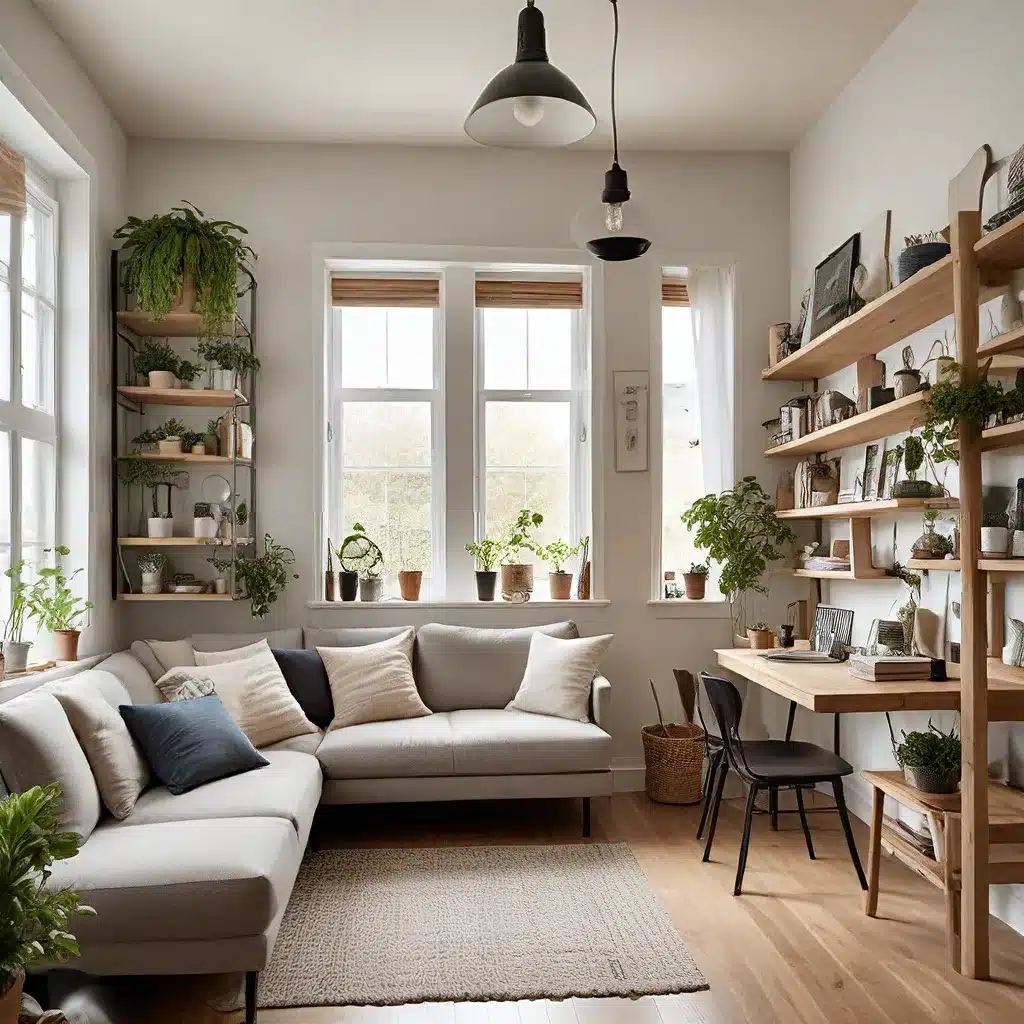
Embracing Sustainable Design Principles
In today’s rapidly evolving world, the need for sustainable design solutions has never been more pressing. As homeowners and design enthusiasts alike seek to create beautiful, functional spaces that also minimize their environmental impact, the principles of conscious curation have become increasingly essential. By thoughtfully selecting materials, incorporating eco-friendly practices, and maximizing limited square footage, we can cultivate living environments that are not only visually stunning but also responsible and long-lasting.
One of the key aspects of sustainable design is the focus on longevity. Rather than succumbing to the fleeting trends of the moment, the conscious curator looks to create spaces that can endure the test of time, both in terms of aesthetic appeal and practical functionality. This approach not only reduces waste but also fosters a deeper connection between the homeowner and their living space, leading to a greater sense of fulfillment and satisfaction.
Maximizing Small Spaces with Smart Design
For those living in urban centers or compact homes, the challenge of small space living can be particularly daunting. However, with the right design strategies and a conscious curation mindset, even the most limited square footage can be transformed into a harmonious and efficient haven. By embracing multifunctional furniture, thoughtful storage solutions, and intelligent space planning, homeowners can unlock the full potential of their small spaces while maintaining a sustainable and stylish aesthetic.
One of the most effective ways to maximize a small space is to integrate furniture and decor that serve multiple purposes. For example, a coffee table that doubles as a storage unit or a bed with built-in drawers can help minimize clutter and make the most of every square inch. Additionally, vertical storage solutions, such as wall-mounted shelves or tall bookcases, can help free up valuable floor space while adding visual interest to the room.
Curating Sustainable Materials and Finishes
When it comes to sustainable design, the selection of materials and finishes plays a crucial role. Homeowners and designers alike must look beyond the surface-level aesthetic and consider the environmental impact of their choices. From natural stone and reclaimed wood to low-VOC paints and energy-efficient appliances, there is a wealth of eco-friendly options available that can elevate the design while also reducing the carbon footprint.
One particularly innovative sustainable material gaining traction in the design world is bamboo. Renowned for its rapid growth, bamboo is a highly renewable resource that can be used in a variety of applications, from flooring and cabinetry to furniture and textiles. Its durability and versatility make it an increasingly popular choice among design-conscious homeowners and professionals alike.
Embracing Luxury with a Conscience
The pursuit of sustainable design does not have to come at the expense of luxury and sophistication. In fact, the best design solutions often seamlessly blend high-end aesthetics with eco-friendly principles, creating living spaces that are both visually stunning and environmentally responsible.
One way to achieve this delicate balance is through the careful selection of artisanal and locally sourced furnishings and decor. By supporting small businesses and independent craftspeople, homeowners can curate a unique and personalized living space while also reducing the carbon footprint associated with mass-produced items. Additionally, the use of natural and renewable materials, such as linen, wool, and rattan, can lend an air of luxurious sophistication to a room while maintaining a sustainable ethos.
Bringing It All Together: A Case Study in Conscious Curation
To illustrate the principles of conscious curation and sustainable design in action, let’s consider a case study of a small-space renovation project. The homeowners, a young, eco-conscious couple, were determined to transform their compact urban apartment into a harmonious and efficient oasis that reflected their values and lifestyle.
Urban Grace Interiors, a renowned design firm specializing in sustainable and personalized solutions, was brought in to oversee the project. The design team began by carefully assessing the available square footage and identifying multifunctional furniture and storage options that would maximize the space without compromising the desired aesthetic.
To achieve a cohesive and visually striking look, the designers selected a neutral color palette accented with natural materials, such as bamboo, linen, and rattan. The floorplan was meticulously planned to create a sense of openness and flow, while strategically placed shelves and cabinets ensured that every nook and cranny was utilized to its fullest potential.
Throughout the renovation process, the design team prioritized the use of eco-friendly materials and energy-efficient appliances, ensuring that the final result not only satisfied the homeowners’ style preferences but also aligned with their sustainable values. The end product was a harmonious and functional living space that seamlessly blended luxury and responsibility, serving as a shining example of the transformative power of conscious curation.
Conclusion: Embracing a Sustainable Future
As we navigate the ever-evolving landscape of interior design, the conscious curation of our living spaces has become an increasingly vital consideration. By embracing sustainable principles, leveraging smart design strategies, and curating luxurious yet eco-friendly elements, we can create homes that not only nourish our senses but also nurture the environment and foster a brighter future.
Whether you’re embarking on a small-space renovation or simply seeking to refresh your existing decor, the principles of conscious curation can serve as a powerful guide, empowering you to cultivate a living environment that is beautiful, functional, and responsible. By staying informed, collaborating with design professionals, and making mindful choices, you can contribute to a more sustainable and fulfilling way of life, one room at a time.

